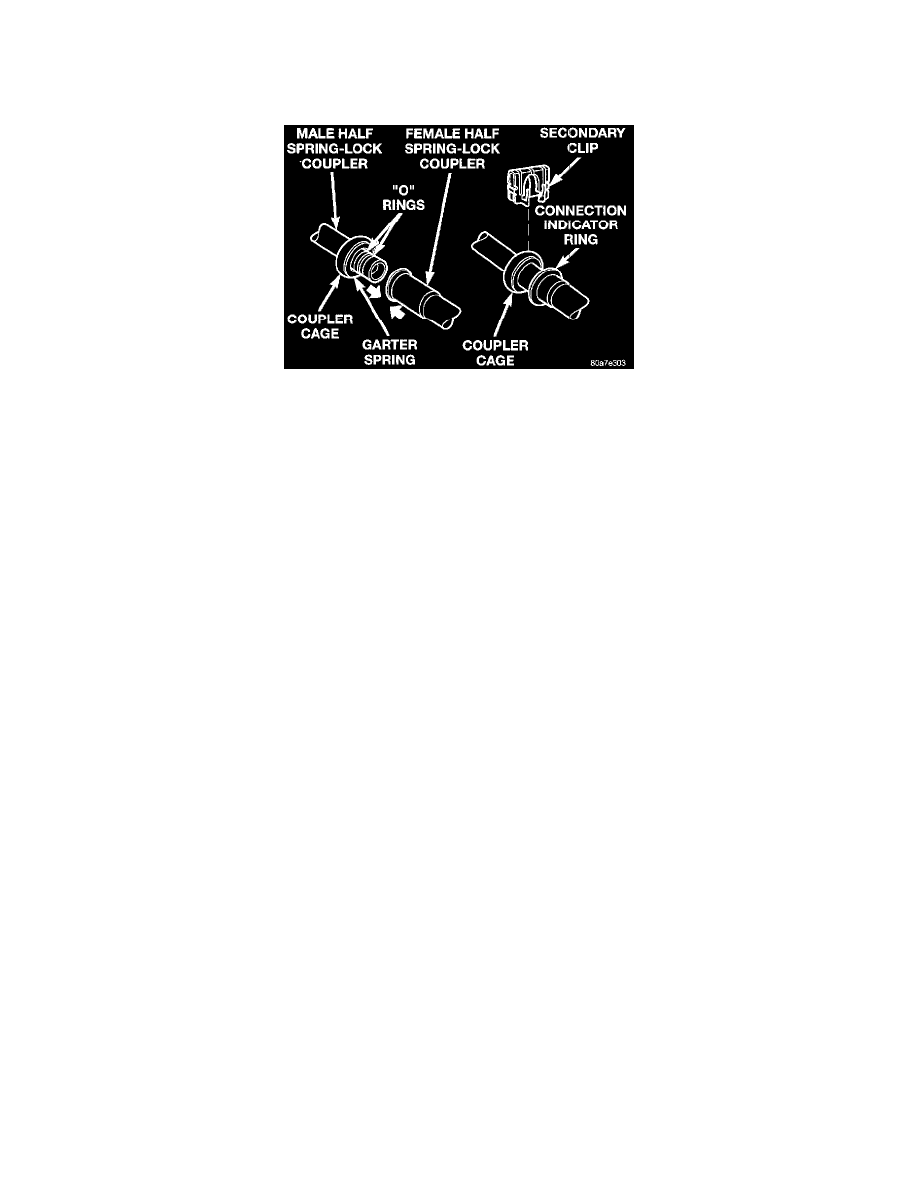Dakota 4WD V8-5.2L VIN Y (1998)

Coupler HVAC: Description and Operation
Refrigerant Line Coupler
Spring-lock type refrigerant line couplers are used to connect many of the refrigerant lines and other components to the refrigerant system. These
couplers require a special tool for disengaging the two coupler halves.
Spring-Lock Coupler - Typical
The spring-lock coupler is held together by a garter spring inside a circular cage on the male half of the fitting. When the two coupler halves are
connected, the flared end of the female fitting slips behind the garter spring inside the cage on the male fitting. The garter spring and cage prevent
the flared end of the female fitting from pulling out of the cage.
Two O-rings on the male half of the fitting are used to seal the connection. These O-rings are compatible with R-134a refrigerant and must be
replaced with O-rings made of the same material.
Secondary clips are installed over the two connected coupler halves at the factory for added blowoff protection. In addition, a plastic ring is used
at the factory as a visual indicator to confirm that these couplers are connected. After the coupler is connected, the plastic indicator ring is no
longer needed; however, it will remain on the refrigerant line near the coupler cage.
The refrigerant must be recovered completely from the system before opening any fitting or connection. Open the fittings with caution, even after
the refrigerant has been recovered. If any pressure is noticed as a fitting is loosened, tighten the fitting and recover the refrigerant from the system
again.
Do not discharge refrigerant into the atmosphere. Use an R-134a refrigerant recovery/recycling device that meets SAE Standard J2210.
The refrigerant system will remain chemically stable as long as pure, moisture-free R-134a refrigerant and refrigerant oil is used. Dirt, moisture, or
air can upset this chemical stability. Operational troubles or serious damage can occur if foreign material is present in the refrigerant system.
When it is necessary to open the refrigerant system, have everything needed to service the system ready. The refrigerant system should not be left
open to the atmosphere any longer than necessary Cap or plug all lines and fittings as soon as they are opened to prevent the entrance of dirt and
moisture. All lines and components in parts stock should be capped or sealed until they are to be installed.
All tools, including the refrigerant recycling equipment, the manifold gauge set, and test hoses should be kept clean and dry. All tools and
equipment must be designed for R-134a refrigerant.
